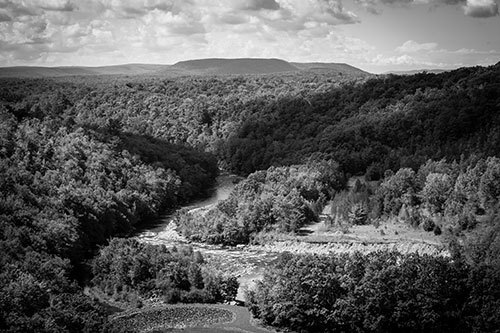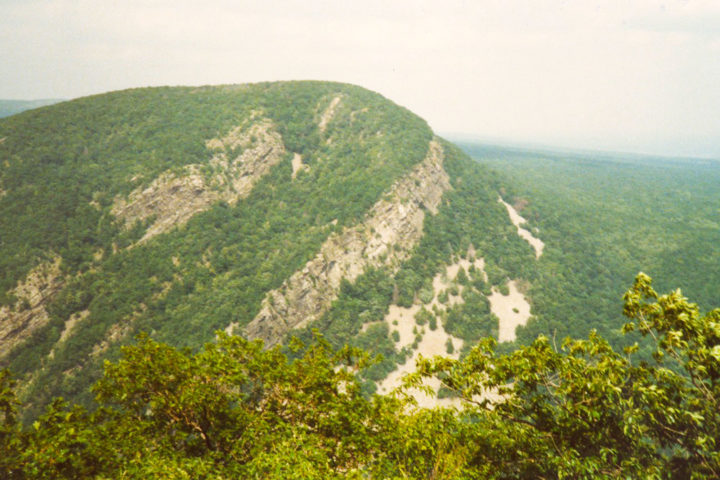Take Action
Protect the Delaware River Watershed
Over the course of its 2,192 miles, the Appalachian National Scenic Trail (A.T.) crosses many of our nation’s iconic rivers. One of those rivers — the Delaware — is notable for its history and its wild, uninhibited beauty.
Like the Trail, the Delaware River has drawn millions of visitors over the past few decades, many from nearby urban areas who are in search of a peaceful outdoor experience. Sections of the Delaware River and several of its tributaries are protected under the U.S. Wild and Scenic Rivers System, providing a natural refuge for wildlife, recreation and clean water.
 The Delaware River watershed stretches across 13 million acres in Pennsylvania, New York, New Jersey and Delaware. More than 25,000 miles of rivers and streams in the region provide drinking water for 15 million people, habitat for various plant and animal populations, and a vital economic resource. Those who live, work and play within the watershed benefit from all the river has to offer — including outdoor recreation opportunities that contribute to a $25 billion economy and half a million jobs.
The Delaware River watershed stretches across 13 million acres in Pennsylvania, New York, New Jersey and Delaware. More than 25,000 miles of rivers and streams in the region provide drinking water for 15 million people, habitat for various plant and animal populations, and a vital economic resource. Those who live, work and play within the watershed benefit from all the river has to offer — including outdoor recreation opportunities that contribute to a $25 billion economy and half a million jobs.
But what if all that changed? Development and pollution across the watershed threaten the fragile river system and the drinking water quality for millions.
Run-off from streets, parking lots, rooftops, farm fields and construction sites often contain a mix of chemicals, sediment, oil, fertilizers, pesticides and bacteria. Just one of these substances can significantly harm water quality, damage wildlife habitats and close off recreational opportunities — combined, they can lead to long-lasting effects that could take decades of effort and significant funding to correct.
The Appalachian Trail Conservancy recognizes that lasting change begins on the community level. We are strengthening our relationships with Pennsylvania and New Jersey towns near the A.T. to improve current zoning (and, in some cases, adopt new zoning altogether) that has a direct positive impact on the Delaware River watershed.

The forested headwaters of the Delaware River and the lands surrounding the A.T. provide mutual ecological support to each other. It is extremely important to protect both the A.T. corridor and lands within the Delaware River watershed.

Strips of vegetation and forest that are a minimum of 100 feet wide provide a line of defense along the banks of waterways. These strips, called “riparian buffers,” can help prevent pollution from entering the water, guarding clean water and wildlife habitats and improving property values. Cities, towns and boroughs can implement policies protecting or creating streamside buffers, which in turn help safeguard clean water for local communities.
Learn more about the importance of the Delaware River Watershed to the Appalachian Trail and the greater Wild East landscape.

Nature’s Water Treatment Plants
Land to Water
Learn more about how stream banks improve water quality, which leads to a healthier ecosystem and greater property values.

A Unity of Land and Water
Delaware Water Gap
Learn about the unique legacy of Delaware Water Gap, a hub of history, recreation, and conservation.

Hear Their Stories
The River's Voices
Interviews with People Who Live, Work, And Play in the Delaware River and Its Surrounding Lands.
Take Action
If you live, work or play in in one of the townships below, you can take action now to help improve the health and conservation of the Delaware River.
Pennsylvania
Upper Bern
Upper Tulpehocken
Windsor
East Penn
Lower Towamensing
Lynn
Eldred
Hamilton
Middle Smithfield
Stroud
Upper Mt. Bethel
Washington
West Penn Township
New Jersey
Albany
Frankford
Hampton
Montague
Sandyston
Stillwater
Hardwick
Frankford
Hampton
Montague
Sandyston
Stillwater
Hardwick
Call or email your local officials and tell them you support clean water and the protection of local rivers and streams by requiring vegetative and forested buffers along their banks that are at least 100 feet wide.





